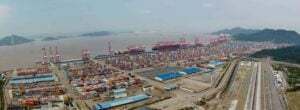At this point, the container shipping crisis is a known issue worldwide, but many people don’t realize the scope of it. It is a serious issue affecting most American and European economies as it is progressively harder to find boats willing to export products elsewhere than from China. Small companies are paying a premium for shipments which they can’t afford daily, affecting their profit margins tremendously if they don’t increase prices.
Since the beginning of the pandemic, shipping containers have become a major issue across most industries including the PPE manufacturing sector. The disruption of supply chains caused by Covid-19 has sparked a global shipping crisis, with freight prices soaring due to a container shortage. This crisis can be segmented into 3 main incidents: the first one is when the pandemic started, stores kept their inventory low enough to sustain the current demand at that time. When commercial establishments started opening again, backorders were pilling up and every store ordered their merchandise at the same time, causing a shipping latency while at the same time increasing the price of shipping containers.
Then, the second incident happened when the Ever Given, one of the world’s largest cargo ships, then became stranded in the Suez Canal, blocking the major trading route for nearly a week. The Suez Canal handles about 12% of world trade, with an average of more than 50 ships passing through every day. It is estimated that the incident triggered a global shipping catastrophe, halting $9 billion in daily international trade.
The third situation is where we stand now, as Guangdong, a significant shipping port accounting for almost a quarter of all Chinese exports, has closed because of a new Covid-19 outbreak. It also houses the Shenzhen and Guangzhou ports, which, according to the World Shipping Council, are the world’s third and fifth largest by container volume, respectively.



